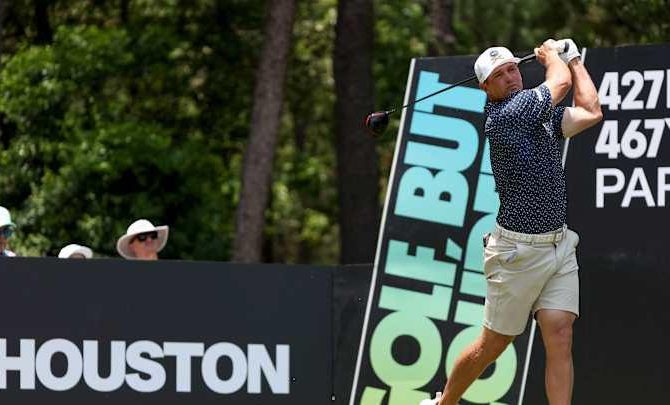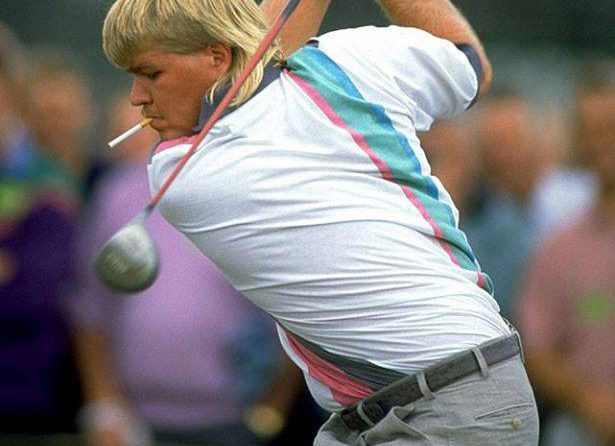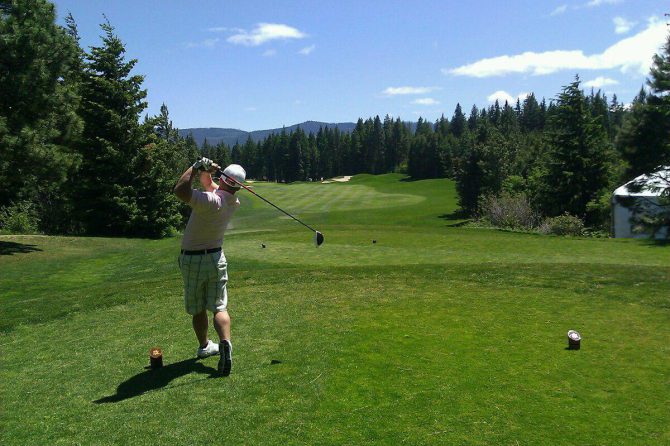Masters champion Ben Crenshaw received guidance from the great Lee Trevino. He shared some valuable ball-striking advice that can improve any golfer’s game. Explore Trevino’s wisdom and learn how you can incorporate it into your swing.
– Crenshaw’s Grip and Setup: Establishing a Solid Foundation
## Crenshaw’s Grip and Setup: Establishing a Solid Foundation
World Golf Hall of Famer Lee Trevino famously advised Ben Crenshaw to “grip it like you would holding a baby bird and waggle it like a rattlesnake.” This sage advice captures the essence of Crenshaw’s impeccable grip and setup, two crucial elements that lay the groundwork for his consistent and masterful swing.
Crenshaw’s grip is a classic interlocking style, which provides a secure hold while promoting a neutral wrist position throughout the swing. He places his left thumb on top of the shaft, interlocking it with his right pinky finger, while his right thumb rests lightly on top of his left forefinger. This grip allows for a firm, yet controlled feel, fostering stability and accuracy.
Equally important is Crenshaw’s setup, which epitomizes balance, alignment, and posture. He takes a slightly open stance with his feet shoulder-width apart. His knees are flexed and his spine forms a neutral curve, providing a stable base for his swing. His hands hang naturally from his shoulders, allowing his arms to swing freely and smoothly. Crenshaw’s spine and shoulders remain parallel to the target line, ensuring his aim is precise and on plane.
| Benefit | Key Feature |
|---|---|
| Stability and control | Interlocking grip |
| Neutral wrist position | Thumb lightly resting on forefinger |
| Balanced stance | Feet shoulder-width apart, slightly open |
| Precise aim | Spine and shoulders parallel to target line |
By meticulously adhering to these fundamental principles, Crenshaw establishes a rock-solid foundation for his swing, ensuring repeatable results and a lifelong legacy of golfing excellence.
– The Takeaway and Backswing: Building Momentum and Control
The Takeaway and Backswing: Building Momentum and Control
The takeaway is the initial phase of the backswing and is considered a crucial part of achieving a powerful and controlled swing. It also determines how the shoulders and arms move in relation to the lower body, creating a balanced and coordinated movement. Crenshaw’s takeaway is characterized by a smooth and gradual movement, with the clubhead moving back slightly outside the target line.
For the backswing, Crenshaw maintains his balance and stability by pivoting his body around his spine, creating a solid base for the downswing. His shoulders and hips rotate together with a slight tilt towards the target, allowing him to gain power and control. The clubhead reaches the top of the backswing in a slightly inside position, with the shaft parallel to the target line and slightly above the plane of the swing.
Trevino’s Advice on the Backswing
Renowned ball-striker Lee Trevino, a close friend of Crenshaw, once offered sage advice that has become a cornerstone of Crenshaw’s swing. Trevino emphasized the importance of “keeping the clubhead low to the ground and moving it slowly through the takeaway.” This helps prevent overswinging and allows for more control and precision in the downswing.
Trevino’s advice aligns with the principles of a proper backswing, as maintaining a low clubhead and a controlled tempo throughout the motion ensures a balanced and repeatable swing. By following Trevino’s guidance, golfers can improve their consistency and accuracy, two essential ingredients for success in the game of golf.
– The Downswing and Impact: Generating Power and Accuracy
The downswing is the pivotal phase in the golf swing, where golfers transition from backswing to impact, generating power and accuracy. Ben Crenshaw, a renowned ball-striking maestro, received invaluable advice from the legendary Lee Trevino, which transformed his approach to the downswing.
Trevino emphasized keeping the left arm straight and allowing the club to shallow out, creating a descending blow into the ball. This technique promotes a consistent strike, minimizing the risk of slicing or hooking. Furthermore, Trevino advised Crenshaw to focus on rotating his hips through impact, generating power while maintaining balance and control.
For amateur golfers, replicating Crenshaw’s downswing requires meticulous attention to several key elements. Firstly, developing a strong grip, with the left thumb placed directly below the shaft, ensures proper club control during the downswing. Additionally, avoiding excessive arm movement and maintaining shoulder stability promotes a fluid and powerful swing.
By incorporating these techniques into their swing, golfers can significantly enhance their ball-striking capabilities, emulating the precision and consistency of Crenshaw. Trevino’s sage advice remains relevant today, providing a roadmap for aspiring golfers seeking to elevate their game to new heights.
– Follow-Through and Finish: Maintaining Balance and Stability
Follow-Through and Finish: Maintaining Balance and Stability
The follow-through and finish are crucial elements of the golf swing that often get overlooked. However, they are just as important as the backswing and downswing in terms of consistency and accuracy. A proper follow-through and finish will help you maintain balance and stability, which in turn will lead to better ball-striking.
Here are a few tips for improving your follow-through and finish:
- Keep your head down: One of the most common mistakes golfers make is lifting their head up too early on the follow-through. This causes them to lose their balance and stability, which can lead to inconsistent shots. Keep your head down until after the ball has been hit, and focus on making a smooth, controlled swing.
- Rotate your body: Your body should rotate through the shot, from the shoulders to the hips. This will help you generate power and maintain balance.
- Shift your weight: As you rotate through the shot, shift your weight from your back foot to your front foot. This will help you maintain stability and keep the clubface square to the ball at impact.
- Extend your arms: After impact, extend your arms towards the target. This is a quick motion to hit the ball on the swing path. This will help you generate power and control the ball’s trajectory.
By following these tips, you can improve your follow-through and finish, which will lead to better ball-striking and more consistent scores.
| Type of swing | Follow-through and finish |
|---|---|
| Smooth swing | Slow, controlled, balanced |
| Violent swing | Fast, uncontrolled, off-balanced |
| Controlled swing | Moderate speed, controlled, balanced |
Trevino’s advice to Crenshaw is simple, but it is also very effective. By focusing on hitting the ball in the center of the clubface, golfers can improve their accuracy and distance. This is a tip that all golfers, regardless of their skill level, can benefit from.






